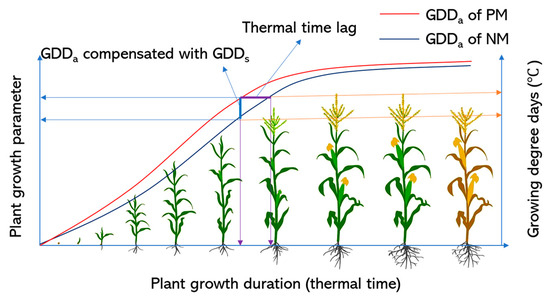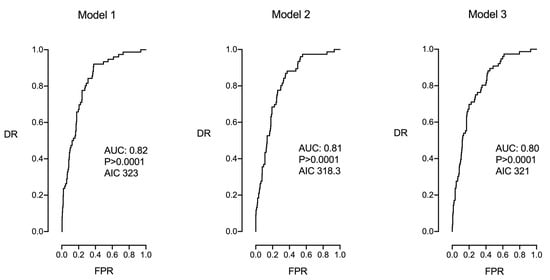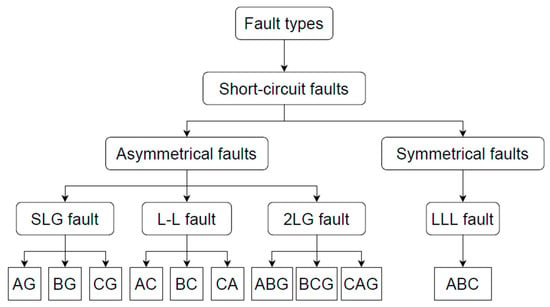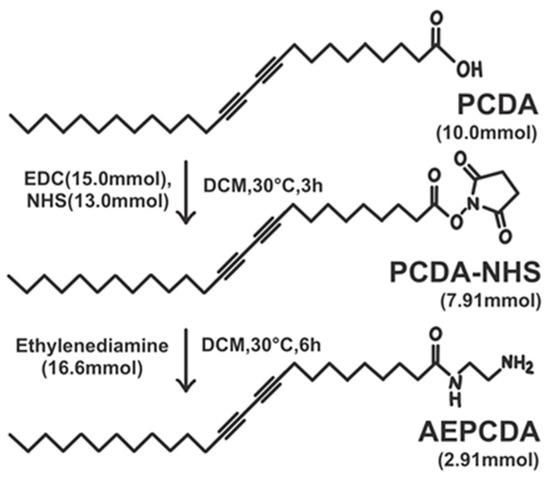Effective management of lactating sows significantly influences various aspects of swine production. This study compared the impact of an hourly feeding regime and a five-times-daily feeding regime on the productive performance, body condition, and welfare of lactating sows, as well as on the growth performance of their offspring. Twenty-eight lactating sows (Landrace × Yorkshire) were divided into two groups: Group 1 was fed five times a day, and Group 2 was fed according to an hourly regime. The data were analyzed using independent-samples T-tests and the Mann–Whitney U test using Statistical Analysis System (SAS, 2011, Version 9.3) software. An hourly feeding regime positively affected (
p < 0.05) sows’ feed intake and body condition, significantly reducing the days from the weaning-to-estrus interval. Group 1 exhibited significantly higher (
p < 0.05) reductions in backfat thickness (BFT) and body condition score (BCS) during the weaning period compared to Group 2. Additionally, significant differences (
p < 0.05) were observed in regard to sow body weight loss, feed intake, piglet livability and mortality rate at weaning, sow index, and calculated milk yield. Feeding sows according to an hourly regime positively impacted their productive performance compared to those fed five times daily. No significant differences (
p > 0.05) were recorded in regard to the total number of piglets born, live births, mummified piglets, stillbirths, piglet mortality, litter size at weaning, and sow feed conversion ratio (FCR). However, the number of piglets weaned per sow per year (PSY) was numerically higher in Group 2 (
p > 0.05). The piglets from Group 2 had significantly higher (
p < 0.05) weaning weights and exhibited lower feed intake, greater weight gain, improved average daily gain, and greater litter size weight gain than those from Group 1. Statistically, sows from Group 2 exhibited a higher frequency of standing (
p < 0.05), which potentially contributed to the reduction in shoulder skin lesions in sows (
p > 0.05). In conclusion, an hourly feeding regime could optimize sow productive performance, body condition, milk yield, welfare, and piglet growth in swine production.
Full article
 IJMS
IMPACT
IJMS
IMPACT Applied Sciences
IMPACT
Applied Sciences
IMPACT Sustainability
IMPACT
Sustainability
IMPACT Sensors
IMPACT
Sensors
IMPACT JCM
IMPACT
JCM
IMPACT Materials
IMPACT
Materials
IMPACT Molecules
IMPACT
Molecules
IMPACT Energies
IMPACT
Energies
IMPACT Electronics
IMPACT
Electronics
IMPACT Remote Sensing
IMPACT
Remote Sensing
IMPACT Cancers
IMPACT
Cancers
IMPACT Nutrients
IMPACT
Nutrients
IMPACT Mathematics
IMPACT
Mathematics
IMPACT Foods
IMPACT
Foods
IMPACT Buildings
IMPACT
Buildings
IMPACT Polymers
IMPACT
Polymers
IMPACT Animals
IMPACT
Animals
IMPACT Water
IMPACT
Water
IMPACT Plants
IMPACT
Plants
IMPACT Agronomy
IMPACT
Agronomy
IMPACT Biomedicines
IMPACT
Biomedicines
IMPACT Processes
IMPACT
Processes
IMPACT Microorganisms
IMPACT
Microorganisms
IMPACT Diagnostics
IMPACT
Diagnostics
IMPACT Nanomaterials
IMPACT
Nanomaterials
IMPACT Viruses
IMPACT
Viruses
IMPACT Medicina
IMPACT
Medicina
IMPACT Healthcare
IMPACT
Healthcare
IMPACT Cells
IMPACT
Cells
IMPACT Forests
IMPACT
Forests
IMPACT Agriculture
IMPACT
Agriculture
IMPACT Land
IMPACT
Land
IMPACT JMSE
IMPACT
JMSE
IMPACT IJERPH
IJERPH
 Symmetry
IMPACT
Symmetry
IMPACT Genes
IMPACT
Genes
IMPACT Pharmaceutics
IMPACT
Pharmaceutics
IMPACT Coatings
IMPACT
Coatings
IMPACT Micromachines
IMPACT
Micromachines
IMPACT Pharmaceuticals
IMPACT
Pharmaceuticals
IMPACT Atmosphere
IMPACT
Atmosphere
IMPACT Children
IMPACT
Children
IMPACT Religions
IMPACT
Religions
IMPACT Antioxidants
IMPACT
Antioxidants
IMPACT Life
IMPACT
Life
IMPACT Metals
IMPACT
Metals
IMPACT Biomolecules
IMPACT
Biomolecules
IMPACT Vaccines
IMPACT
Vaccines
IMPACT Education Sciences
IMPACT
Education Sciences
IMPACT Minerals
IMPACT
Minerals
IMPACT Horticulturae
IMPACT
Horticulturae
IMPACT Brain Sciences
IMPACT
Brain Sciences
IMPACT JPM
IMPACT
JPM
IMPACT Bioengineering
IMPACT
Bioengineering
IMPACT

















